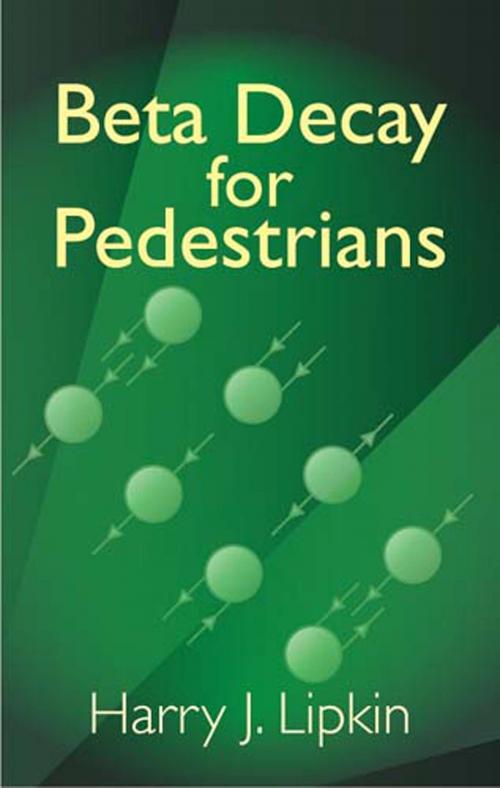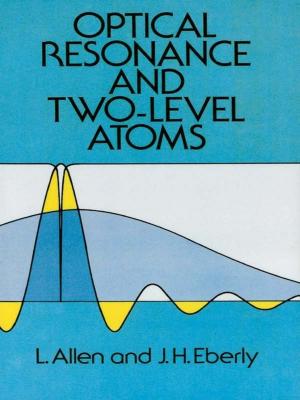| Author: | Harry J. Lipkin | ISBN: | 9780486151335 |
| Publisher: | Dover Publications | Publication: | December 27, 2012 |
| Imprint: | Dover Publications | Language: | English |
| Author: | Harry J. Lipkin |
| ISBN: | 9780486151335 |
| Publisher: | Dover Publications |
| Publication: | December 27, 2012 |
| Imprint: | Dover Publications |
| Language: | English |
The "pedestrian approach" was developed to describe some essentially simple experimental results and their theoretical implications in plain language. In this graduate-level text, Harry J. Lipkin presents simply, but without oversimplification, the aspects of beta decay that can be understood without reference to the formal theory; that is, the reactions that follow directly from conservation laws and elementary quantum mechanics.
The pedestrian treatment is neither a substitute for a complete treatment nor a watered-down version. Its derivation of results obtainable without the formal theory makes these results more understandable and less mysterious to those who have neither the time nor the inclination to master the details of the theory. On the other hand, those already acquainted with the formal theory will find in the pedestrian treatment a clear distinction between results dependent on the specific assumptions underlying the formal theory and those independent of these assumptions, which follow from simple general principles. Since peculiar experimental results are an ever-present possibility, it is always useful to have a simple method of evaluating challenges to theoretical assumptions or approximations.
The "pedestrian approach" was developed to describe some essentially simple experimental results and their theoretical implications in plain language. In this graduate-level text, Harry J. Lipkin presents simply, but without oversimplification, the aspects of beta decay that can be understood without reference to the formal theory; that is, the reactions that follow directly from conservation laws and elementary quantum mechanics.
The pedestrian treatment is neither a substitute for a complete treatment nor a watered-down version. Its derivation of results obtainable without the formal theory makes these results more understandable and less mysterious to those who have neither the time nor the inclination to master the details of the theory. On the other hand, those already acquainted with the formal theory will find in the pedestrian treatment a clear distinction between results dependent on the specific assumptions underlying the formal theory and those independent of these assumptions, which follow from simple general principles. Since peculiar experimental results are an ever-present possibility, it is always useful to have a simple method of evaluating challenges to theoretical assumptions or approximations.















